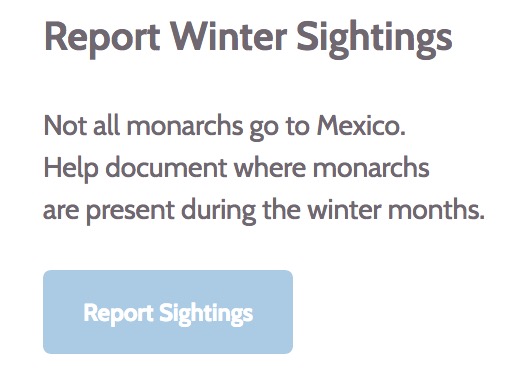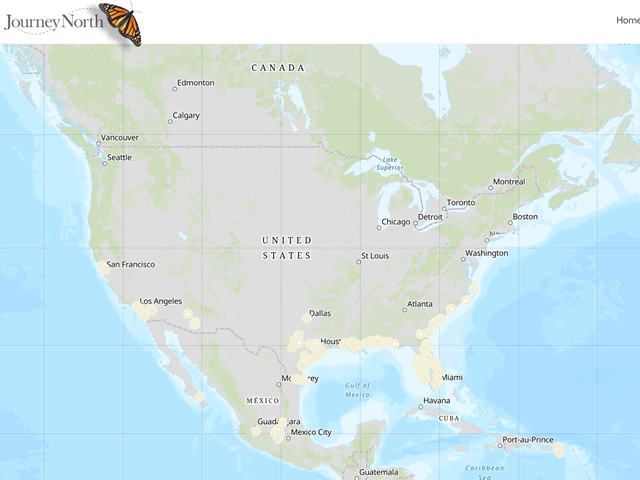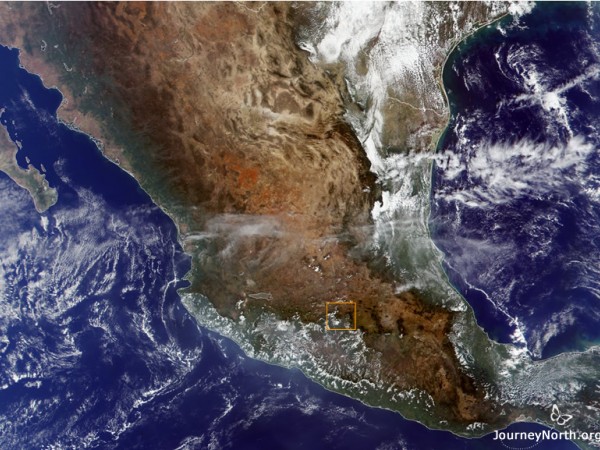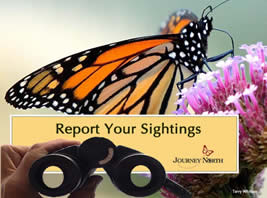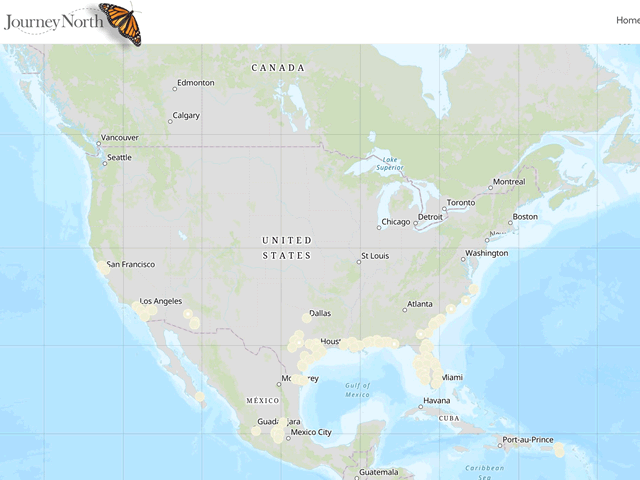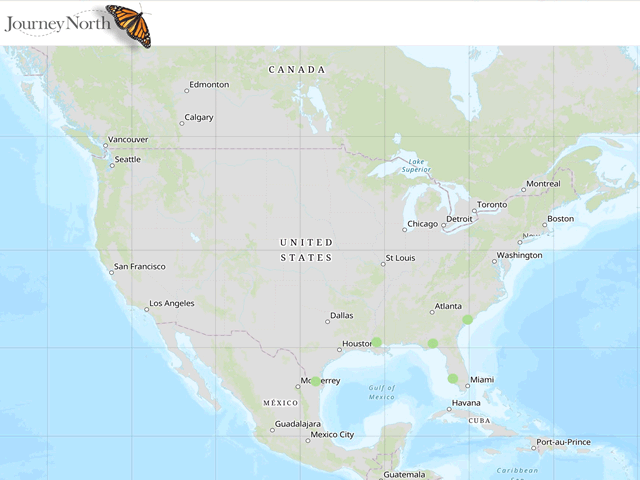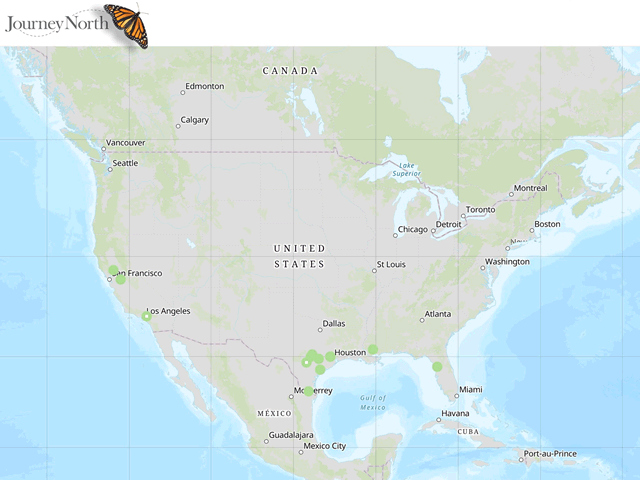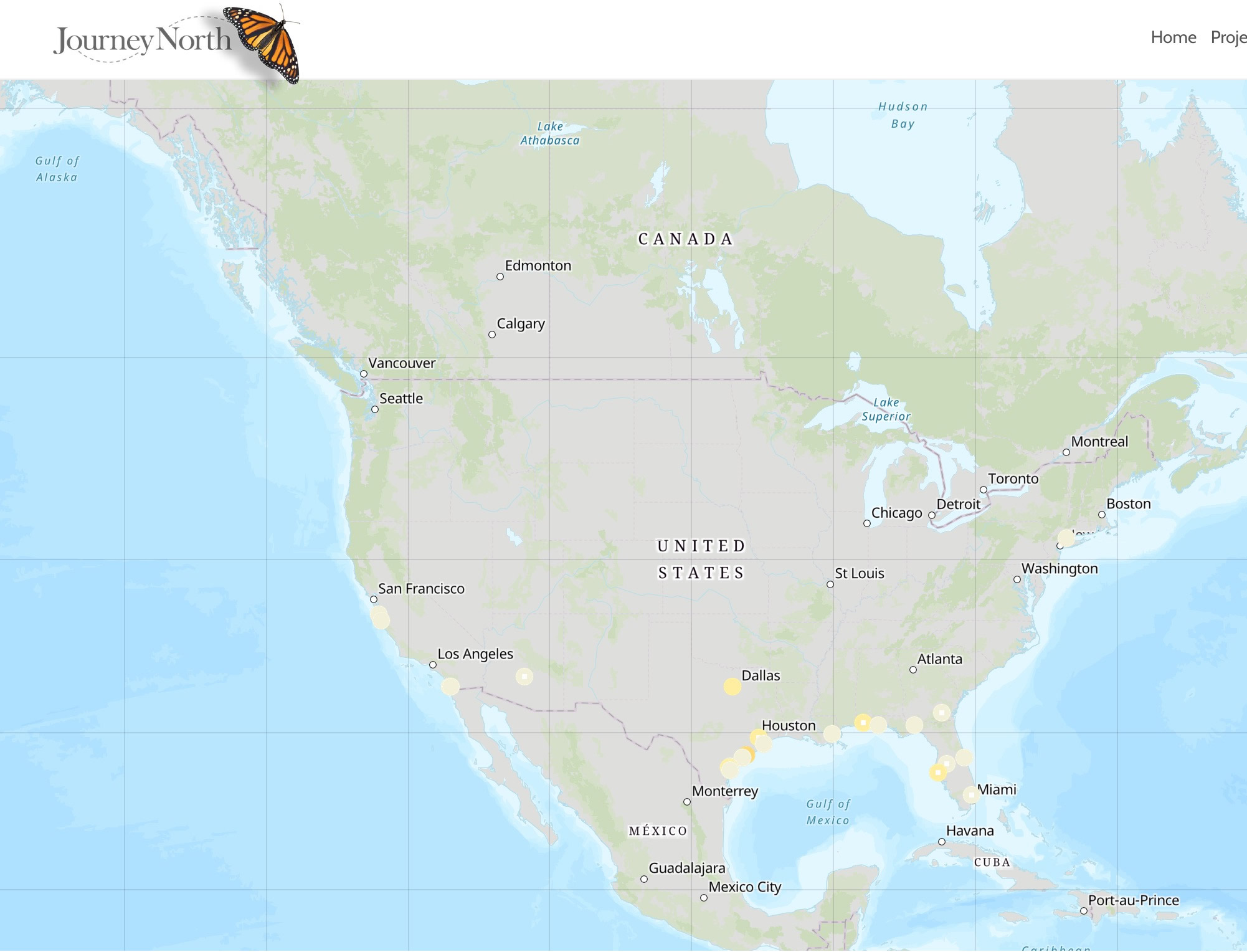Marvelous Monarchs in Mexico
Dear Friends,
Over the past week, we are seeing many monarchs following streams and rivers downhill to our town here in Angangueo. In the afternoon, many of the monarchs do return to their roosting spots back in El Rosario. However, we suspect that other monarchs may have moved further north relocating and increasing numbers at the Sierra Chincua Sanctuary. Perhaps some monarchs are actually departing our region entirely. We may hear more and more of sightings of monarchs further north of us here near the Sanctuaries.
We have asked our local expert guides at both El Rosario and Sierra Chincua Sanctuaries for their assessment of the situation. These local experts have observed a decrease in the numbers of monarch at the colonies at the start of the past week. These guides surmise that monarchs could be leaving, creating much smaller colonies, scattered in other parts of Central México in numbers that would not allow them to be recognized as part of one of the official Sanctuary populations.
Sierra Chincua Sanctuary
After having thinned out for several days as we reported in our last week’s article, the past week has been different. This past weekend and during the week, Sierra Chincua Sanctuary seemed to present a wonderful re-location area for monarchs creating a marvelously dense colony.
Guides at Sierra Chincua Sanctuary have remarked, “maybe monarchs from Cerro Pelón Sanctuary could be halting here and increasing the colony back again to a similar área than in El Rosario…this could be very posible.”
Mortality of monarchs in Sierra Chincua Sanctuary looks normal in number. Mating sightings seem to be normal for this time of the month.
Many visitors still continue visiting the Sanctuary. They marvel as they watch the monarchs.
As of Tuesday, this colony continues to look still wonderful in population, regardless of whether it was caused by some migration from far away colonies or not. There does not at present seem to be significant decrease of monarch numbers yet that would tell us that there is a massive migration happening.
El Rosario Sanctuary
Last weekend, El Rosario Sanctuary is looking marvelous with just a small reduction in the occupied area, but not in overall density.
Mortality of monarchs seems normal and mating too as compared to previous years.
Evidence of Migration Starting
However, only this past Monday, February 24th, a local family from La Salud, a community located to the northwest of El Rosario Sanctuary, called to us to say: “Come, please come and see how the monarchs are streaming down in waves and waves and clustering into our Río Grande canyon and river!”
Their observations provided to be true. A considerable percentage of the population in El Rosario Sanctuary, just these past days, now moved down and northwest along Rio Grande canyon and river, finding shelter and spring water at in beautiful Oyamel forest there.
Now, given that the population in El Rosario seems to be on the move, the close of the the overwintering season could be be announced any day. Our experts shall explain later whether our increasingly warmer temperatures are the main reason for this departure.
The views along the Rio Grande canyon and river has been simply overwhelming as it has been at the Sierra Chincua and El Rosario colonies. It all seems that wise Mathusalen Monarch generation have now decided this could be the moment for them to start their journey north.
Let us contemplate this fantastic phenomenon. Monarchs migration is one of the great mysteries of nature.
Estela Romero, Angangueo, Michoacán, México
For Journey North
Monarchs & Milkweed Spring / Summer Maps
After FIRST sightings, please report:
- Monarch Adult Sighted
- Milkweed Sighted
- Monarch Egg Sighted
- Monarch Larva Sighted
- Monarch (OTHER observations) *including behaviors such as mating and nectaring

